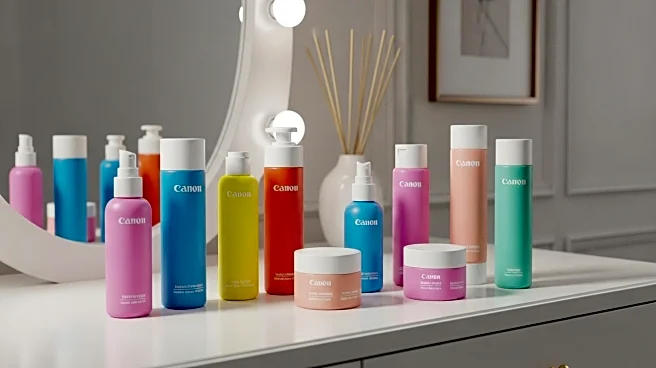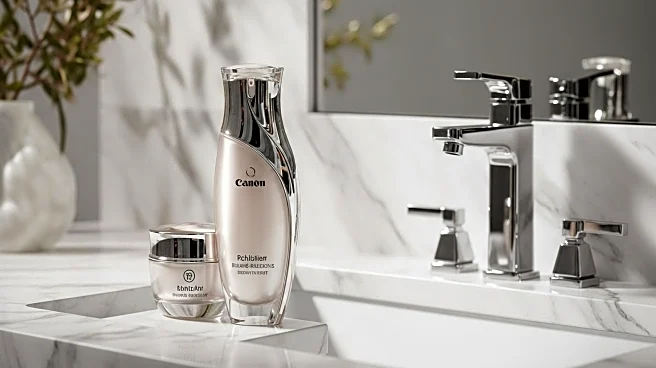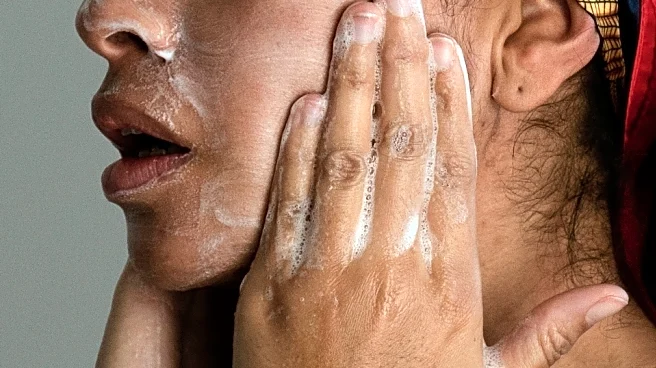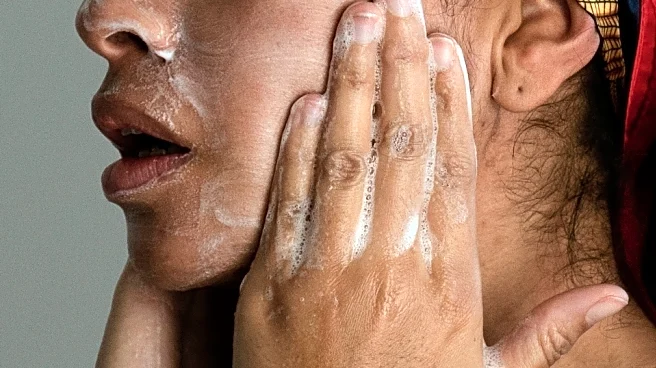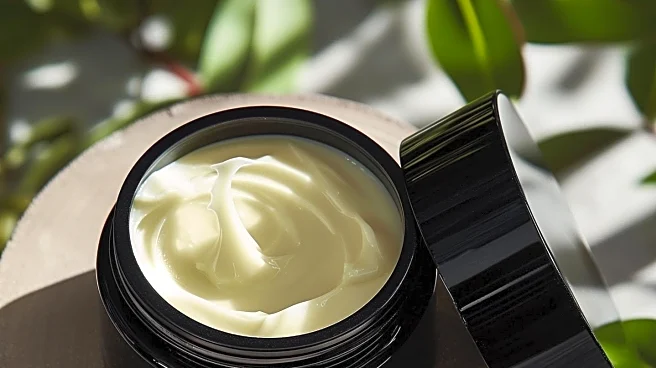What's Happening?
A facial steamer priced under $30 has become a popular addition to many individuals' morning routines, as highlighted in recent reviews. The device uses warm steam to penetrate the skin, unclog pores, and moisturize, offering a spa-like experience at home. Users have reported benefits such as improved skin circulation, reduced pore visibility, and relief from congestion. The steamer is noted for its ease of use, adjustable head, and the ability to incorporate essential oils for added therapeutic effects. Despite its small water capacity, users find it effective for daily use, enhancing the application of skincare products like vitamin C and retinol creams.
Why It's Important?
The growing popularity of affordable wellness devices like facial steamers reflects a broader trend towards self-care and at-home spa experiences. As consumers increasingly seek convenient and cost-effective ways to enhance their skincare routines, products like these offer accessible solutions. This trend may impact the beauty industry by driving demand for similar devices and encouraging innovation in personal care technology. Additionally, the emphasis on self-care and wellness can contribute to improved mental health and stress relief, as individuals incorporate relaxing practices into their daily lives.
What's Next?
As the demand for at-home wellness devices continues to rise, manufacturers may focus on improving product features such as water capacity and multifunctionality. The integration of essential oils and other therapeutic elements could become more prevalent, catering to consumers' desire for personalized experiences. Retailers might expand their offerings to include a wider range of self-care products, potentially influencing market competition and pricing strategies. Furthermore, consumer feedback will likely drive enhancements in product design and usability, ensuring these devices meet evolving needs.
Beyond the Headlines
The increasing interest in self-care routines highlights a cultural shift towards prioritizing personal well-being and mindfulness. This movement may encourage individuals to explore other wellness practices, such as sound baths and meditation, fostering a holistic approach to health. As people invest in their physical and mental health, there could be long-term benefits in terms of reduced healthcare costs and improved quality of life. Additionally, the focus on self-care may influence societal attitudes towards work-life balance and stress management.

